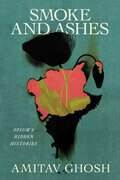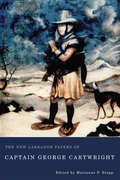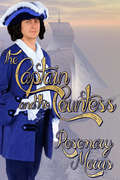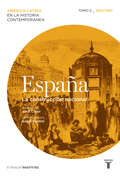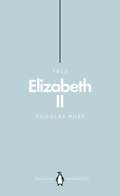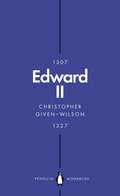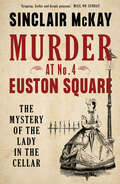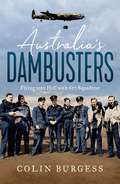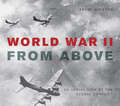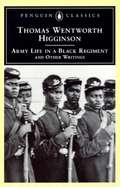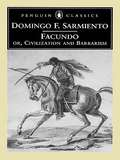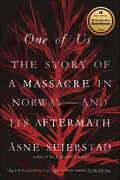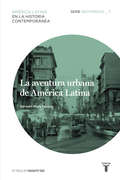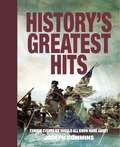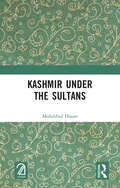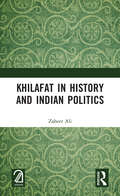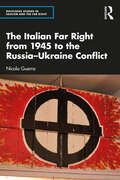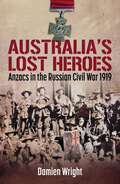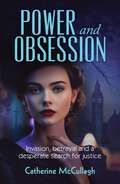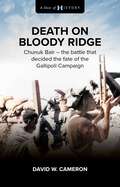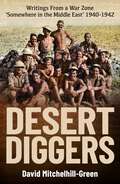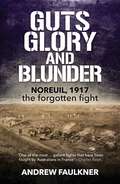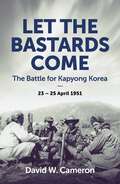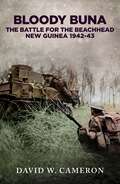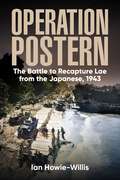- Table View
- List View
Smoke and Ashes: Opium's Hidden Histories
by Amitav GhoshNamed a Most Anticipated Book of 2024 by Foreign Policy, Literary Hub, and The MillionsGhosh unravels the impact of the opium trade on global history and in his own family―the climax of a yearslong project.When Amitav Ghosh began the research for his monumental cycle of novels the Ibis Trilogy, he was startled to learn how the lives of the nineteenth-century sailors and soldiers he wrote about were dictated not only by the currents of the Indian Ocean but also by the precious commodity carried in enormous quantities on those currents: opium. Most surprising of all, however, was the discovery that his own identity and family history were swept up in the story. Smoke and Ashes is at once a travelogue, a memoir, and an essay in history, drawing on decades of archival research. In it, Ghosh traces the transformative effect the opium trade had on Britain, India, and China, as well as the world at large. The trade was engineered by the British Empire, which exported Indian opium to sell to China to redress their great trade imbalance, and its revenues were essential to the empire’s financial survival. Following the profits further, Ghosh finds opium central to the origins of some of the world’s biggest corporations, of America’s most powerful families and prestigious institutions (from the Astors and Coolidges to the Ivy League), and of contemporary globalism itself. Moving deftly between horticultural history, the mythologies of capitalism, and the social and cultural repercussions of colonialism, in Smoke and Ashes Ghosh reveals the role that one small plant has had in making our world, now teetering on the edge of catastrophe.
The New Labrador Papers of Captain George Cartwright
by Marianne P. Stopp George CartwrightCaptain George Cartwright (1739-1819), an English merchant who spent time in Labrador between 1770 and 1786, is best known for the fascinating account of his experiences provided in his Journal of Transactions and Events during a Residence of nearly Sixteen Years on the Coast of Labrador (1792). In recent years more of his papers have been discovered and stand alongside his journal as important source material for the early colonial period in the Atlantic region. Transcribed from original documents and extensively annoted by Marianne Stopp, the new papers deal with practical matters such as how to build a house in a sub-arctic climate, the best methods of sealing, trapping, and salmon fishing, as well as merchant rivalries and trade with Aboriginal groups. Cartwright's papers are of value for what they tell us about early methods and materials; Marianne Stopp's detailed introduction provides a history of Cartwright's Labrador and discusses these new papers with respect to early architecture, ethnohistory, material culture, and Inuit studies.
The Captain and the Countess
by Rosemary MorrisWhy does heart-rending pain lurk in the back of the wealthy Countess of Sinclair’s eyes? Captain Howard’s life changes forever from the moment he meets Kate, the intriguing Countess and resolves to banish her pain. Although the air sizzles when widowed Kate, victim of an abusive marriage meets Edward Howard, a captain in Queen Anne’s navy, she has no intention of ever marrying again. However, when Kate becomes better acquainted with the Captain she realises he is the only man who understands her grief and can help her to untangle her past, and help her regain that which should be hers by right.
España. La construcción nacional. Tomo 2 (1830-1880)
by Varios AutoresTomo II de España en la Colección América Latina en la Historia Contemporánea, dirigido por Jordi Canal y coordinado por Isabel Burdiel.La quiebra definitiva de la monarquía absoluta, la consolidación del liberalismo y el ensayo de sus diferentes propuestas se produjeron en España entre 1833 y 1874. La pérdida del grueso del imperio americano implicó el reacomodo de España como potencia europea de segundo orden dentro del bloque liberal liderado por Francia e Inglaterra. Los retos que se plantearon en este periodo, y las variadas soluciones que se procuraron, formaron parte del crucial proceso transnacional de gobernabilidad posrevolucionaria en el mundo occidental.La colección América Latina en la Historia Contemporánea es uno de los proyectos editoriales más importantes de las últimas décadas y una aportación original y novedosa a la historiografía sobre América Latina en la que han participado más de 400 historiadores de diversos países. Presenta una visión plural y accesible de la historia contemporánea de las naciones latinoamericanas ?incluyendo aquellas otras, europeas o americanas, que más han aportado a su materialización? y revela las claves políticas, sociales, económicas y culturales que han determinado su trayectoria y el lugar en el mundo que hoy ocupan.
Elizabeth II: The Steadfast (Penguin Monarchs)
by Douglas HurdIn September 2015 Queen Elizabeth II becomes Britain's longest-reigning monarch. During her long lifetime Britain and the world have changed beyond recognition, yet throughout she has stood steadfast as a lasting emblem of stability, continuity and public service.Historian and senior politician Douglas Hurd has seen the Queen at close quarters, as Home Secretary and then on overseas expeditions as Foreign Secretary. Here he considers the life and role of Britain's most greatly admired monarch, who, inheriting a deep sense of duty from her father George VI, has weathered national and family crises, seen the end of an Empire and heard voices raised in favour of the break-up of the United Kingdom.Hurd creates an arresting portrait of a woman deeply conservative by nature yet possessing a ready acceptance of modern life and the awareness that, for things to stay the same, they must change.With a preface by HRH Prince William, Duke of Cambridge
Edward II: The Terrors of Kingship (Penguin Monarchs)
by Christopher Given-Wilson'He seems to have laboured under an almost child-like misapprehension about the size of his world. Had greatness not been thrust upon him, he might have lived a life of great harmlessness.'The reign of Edward II was a succession of disasters. Unkingly, inept in war, and in thrall to favourites, he preferred digging ditches and rowing boats to the tedium of government. His infatuation with a young Gascon nobleman, Piers Gaveston, alienated even the most natural supporters of the crown. Hoping to lay the ghost of his soldierly father, Edward I, he invaded Scotland and suffered catastrophic defeat at the Battle of Bannockburn. After twenty ruinous years, betrayed and abandoned by most of his nobles and by his wife and her lover, Edward was imprisoned in Berkeley Castle and murdered - the first English king since the Norman Conquest to be deposed.
Murder at No. 4 Euston Square: The Mystery of the Lady in the Cellar
by Sinclair McKayA chilling true crime story of a baffling boarding house murder in Victorian London and the stunning secrets revealed by the investigation.Someone must have known what happened to Matilda Hacker. For someone in that house had killed her. So how could the murderer prove so elusive? Standing four storeys tall in an elegant Bloomsbury terrace, No. 4, Euston Square was a well-kept, respectable boarding house. But beneath this genteel Victorian London veneer lay murderous intrigue. On 9 May 1879, the body of a former resident, Matilda Hacker, was discovered by chance in the coal cellar. The ensuing investigation—led by Inspector Charles Hagen, rising star of the recently formed CID—stripped bare the dark side of Victorian domesticity.In this true-crime story, Sinclair McKay meticulously evaluates the evidence in first-hand sources. His gripping account sheds new light on a mystery that eluded Scotland Yard.Praise for Murder at No. 4 Euston Square“With the gusto of a penny dreadful, Murder at No. 4 Euston Road dodges any stodgy courtroom testimony that can weigh down true crime stories and sticks to the juicy details. It is hard to avoid the comparison with Kate Summerscale’s The Suspicions of Mr Whicher and it has similar historical richness and plot twisting.” —The Spectator (UK)“Sinclair McKay is an accomplished and talented author with a rare skill. . . . True crime fans and history buffs will enjoy this book, coming away with an enthralling true crime story and a new knowledge and understanding of Victorian London.” —Crime Traveller (UK)“Gripping, gothic and deeply poignant.” —The Mail on Sunday (UK)“A meticulously researched book.” —Brian Viner, Daily Mail (UK)
Australia's Dambusters: Flying into Hell with 617 Squadron
by Colin BurgessThe story of 617 Squadron RAF, which carried out one of the most dangerous and audacious aerial bombing raids of World War II It was the evening of 16 M ay 1943 Nineteen modified Lancaster bombers from 617 Squadron RAF, under the command of youthful W ing Commander Guy Gibson, roared into the night sky from their Lincolnshire base. They were on a top-secret Bomber Command mission, codenamed Operation Chastise, now regarded as one of the most dangerous and audacious bombing raids of World War II – an attack on the formidable, well-defended dams of G ermany&’s Ruhr Valley. Slung beneath the belly of each aircraft was one of the war&’s greatest secrets – a bouncing bomb. Against the odds, and flying straight and level into the teeth of terrifying enemy f ire, they succeeded in breaching the two principal dams. Many of the 133 airmen involved that fateful night hailed from Australia, and several would be counted among the 56 who would not return to base next morning. The Dams Raid led to the men of this gallant company – often referred to as a suicide squadron – taking on even more hazardous operations in the final two years of the war. Under valorous leadership, and now armed with massive Tallboy and Grand Slam &‘earthquake&’ bombs, they obliterated vital Nazi installations, destroying such defiant targets as the heavily defended K embs Barrage and the German battleship Tirpitz, often at a terrible cost in lives. First published in 2003, this deeply researched, revised and updated edition of Australia&’s Dambusters offers a truly comprehensive account of the most famous bombing raid of the war through the words and stories of the courageous Australian airmen and others who flew on this and later perilous missions, remembered and forever immortalised as the Dambusters.
World War II From Above: An Aerial View of the Global Conflict
by Jeremy HarwoodIn World War II From Above, historian Jeremy Harwood profiles the fascinating story, unknown to many, of the battle waged by Allied and Axis spies in the skies to obtain accurate aerial intelligence during World War II. Harwood features dozens of eye-catching aerial reconnaissance photographs drawn from the archives compiled by all the major fighting powers. His accompanying text profiles the daring pilots who risked death to shoot these photographs and the photographic interpreters who pioneered a totally new science to reveal the secrets they contained. Inspiring, informative, and entertaining special features focus on particularly crucial operations from both the Allied and Axis perspectives—from the American Doolittle Raid against Japan to the numerous Allied battles against Germany’s cutting-edge U-boats to the Battle of Monte Cassino and a score of other epic campaigns. Told through photographs that have largely never before appeared in print outside of their reconnaissance origins, World War II From Above combines history with photography, placing the reader in the midst of the action like few books ever have.
Army Life in a Black Regiment and Other Writings
by Thomas Wentworth HigginsonA stirring account of wartime experiences from the leader of the first regiment of emancipated slavesThomas Wentworth Higginson, a Unitarian minister, was a fervent member of New England's abolitionist movement, an active participant in the Underground Railroad, and part of a group that supplied material aid to John Brown before his ill-fated raid on Harpers Ferry. When the Civil War broke out, Higginson was commissioned as a colonel of the black troops training in the Sea Islands off the coast of the Carolinas. Shaped by American Romanticism and imbued with Higginson's interest in both man and nature, Army Life in a Black Regiment ranges from detailed reports on daily life to a vivid description of the author's near escape from cannon fire, to sketches that conjure up the beauty and mystery of the Sea Islands. This edition of Army Life features as well a selection of Higginson's essays, including 'Nat Turner's Insurrection' and 'Emily Dickinson's Letters. ''Has some claim to be the best written narrative to come from the Union during the Civil War. '- Henry Steele CommagerIntroduction and Notes by R. D. MADISON
Facundo
by Domingo F. SarmientoOstensibly a biography of the gaucho barbarian Juan Facundo Quiroga, Facundo is also a complex, passionate work of history, sociology, and political commentary, and Latin America's most important essay of the nineteenth century. .
One of Us: The Story of a Massacre in Norway—and Its Aftermath
by Åsne SeierstadOne of The New York Times Book Review's Ten Best Books of 2015 and a New York Times bestseller, and now the basis for the Netflix film 22 July, from acclaimed filmmaker Paul Greengrass Widely acclaimed as a masterpiece, Åsne Seierstad’s One of Us is essential reading for a time when mass killings are so grimly frequent. On July 22, 2011, Anders Behring Breivik detonated a bomb outside the Norwegian prime minister's office in central Oslo, killing eight people. He then proceeded to a youth camp on the wooded island of Utøya, where he killed sixty-nine more, most of them teenage members of the country's governing Labour Party. In One of Us, the journalist Åsne Seierstad tells the story of this terrible day and its reverberations. How did Breivik, a gifted child from an affluent neighborhood in Oslo, become Europe's most reviled terrorist? How did he accomplish an astonishing one-man murder spree? And how did a famously peaceful and prosperous country cope with the slaughter of so many of its young? As in her international bestseller The Bookseller of Kabul, Seierstad excels at the vivid portraiture of lives under stress. She delves deep into Breivik's childhood, showing how a hip-hop and graffiti aficionado became a right-wing activist, a successful entrepreneur, and then an Internet game addict and self-styled master warrior who believed he could save Europe from the threat of Islam and multiculturalism. She writes with equal intimacy about Breivik's victims, tracing their political awakenings, teenage flirtations and hopes, and ill-fated journeys to the island. By the time Seierstad reaches Utøya and relates what happened there, we know both the killer and those he will kill. In the book's final act, Seierstad describes Breivik's tumultuous public trial. As Breivik took the stand and articulated his ideas, an entire country debated whether he should be deemed insane, and asked why a devastating sequence of police errors allowed one man to do so much harm.One of Us is at once a psychological study of violent extremism, a dramatic true crime procedural, and a compassionate inquiry into how a privileged society copes with homegrown evil. Lauded in Scandinavia for its literary merit and moral poise, One of Us is the true story of one of our age's most tragic events.
La aventura urbana de América Latina. Recorridos_3
by GERMÁN MEJÍA PAVONYEl ochenta por ciento de los latinoamericanos vive hoy en poblaciones de más de 20.000 habitantes. Esta cifra sorprende, pues aceptamos que la mayoría de las localidades de la región apenas sobrepasa el carácter rural. En realidad, la historia del desarrollo urbano del subcontinente ha sido desdeñada por teorías victimistas que la condenan sin remedio al atraso; por ello, resulta paradójico que desde los primeros años del siglo XIX la ciudad se revelara esencial para la construcción de los nuevos Estados nacionales, y que la producción de riquezas, de origen agrario o minero, encontrara en sus urbes la única posibilidad para transformar la sociedad entera. La historia de América Latina es, en este sentido, una aventura de futuro que se construye desde las entrañas de su ya longeva dinámica urbana. Recorridos se propone destacar los ejes comunes a la historia de América Latina en una perspectiva global, libre de visiones nostálgicas y exóticas. La serie analiza desde la independencia hasta la actualidad temas y horizontes que trascienden lo nacional, tanto en el espacio como en el tiempo. Mediante una narrativa accesible y con un enfoque novedoso, identifica elementos de originalidad social y cultural. También reflexiona sobre la potencia y la presencia de América Latina en tiempos de globalización, en los que se ha convertido en destacada protagonista.
History's Greatest Hits
by Joseph CumminsIn this unillustrated edition, Joseph Cummins recounts thirty-seven of the best-known episodes from the past. Not only does he relate and re-create these events in captivating fashion, he also analyzes their impact on subsequent history and explains the reasons for their enduring fame. Accompany Hannibal over the Alps with a herd of elephants and learn what led him to attempt such a daunting and outlandish undertaking. Cross the Delaware River with George Washington to discover how his subsequent raid on British-held Trenton, New Jersey, changed the course of the American Revolution. Follow the British Light Brigade into the "Valley of Death" during the Crimean War and find out how this farcical military blunder was immortalized through its rendition in verse.- We've all heard of these momentous events, but how much do we really know about them? And why do we remember them?- Inside readers find thirty-seven in-depth accounts of the greatest events in history.Gripping, revealing, and informative, History's Greatest Hits is a fascinating read for history buffs, or anyone seeking to understand the world we live in today.
Kashmir Under the Sultans
by Mohibbul HasanKashmir Under Sultans introduces the reader to a subject that begins with the foundation of the Sultanate and ends with the conquest of Kashmir by Akbar. During the Sultanate period, Kashmir had achieved a high standard of culture, but with the disappearance of her independence, her culture gradually declined. Poets, painters, and scholars had to leave the Valley and seek their livelihood elsewhere owing to the absence of local patronage. They then entered the service of the Mughal emperors and were added to the court, thereby lessening the cultural impoverishment of Kashmir. The book encloses political, social, economic and cultural activities that had a lasting influence on the Kashmir Valley in that period. It is of considerable value to social historians as Professor Mohibbul Hasan offers insights into political and cultural currents and crosscurrents in Kashmir. This title is co-published with Aakar Books. Print editions not for sale in South Asia (India, Sri Lanka, Nepal, Bangladesh, Pakistan and Bhutan)
Khilafat in History and Indian Politics
by Zaheer AliThis book is a brief historical account of Khilafat, an Islamic political institution mired in controversies from its inception. It is an attempt to present an objective critique of the Islamic polity that, in a way, was primarily responsible for crafting schisms in Islam with its commencement. By the time the last Khilafat of the Ottomans came to an end in the aftershock of the Second World War, the Muslim political elite in India launched a movement for the restoration and continuation of the Ottoman Khilafat. The most paradoxical dimension of the issue was that in the Arab peninsula, the epicenter of Islam, the people were struggling to cast away the yoke of the Ottoman Khilafat, then why were the Indian Muslims emotionally involved in a movement that was vehemently condemned and assailed by a majority of Muslims outside the Indian subcontinent? This title is co-published with Aakar Books. Print editions not for sale in South Asia (India, Sri Lanka, Nepal, Bangladesh, Pakistan and Bhutan)
The Italian Far Right from 1945 to the Russia-Ukraine Conflict (Routledge Studies in Fascism and the Far Right)
by Nicola GuerraThe Italian Far Right from 1945 to the Russia–Ukraine Conflict provides a comprehensive account of the postwar parliamentary and extra parliamentary far right in Italy. This book explores the ideology, movements and activism of the extreme right and neo- fascists. The recent victory in the Italian parliamentary elections of the ‘postfascist’ party Fratelli d’Italia and its leader Giorgia Meloni highlights the importance of such research. The book examines why some of these movements participated with CIA- backing in the ‘Strategy of Tension’ in the years of the Cold War where terrorist actions aimed to keep Italy in NATO and prevent the Communist Party from coming to power, while other extreme- right groups vehemently opposed this and what they considered the dangerous ‘Americanization’ of the country. It debunks the myth that there was a unified postwar fascist movement in Italy, but instead excavates the complex battles within the extreme right as well as with their opponents from the left, and the authorities. This study is necessary to clarify the history and ideological dynamics of a political area still too often shrouded in mystery and whose geopolitical role is still poorly understood and generally underestimated. The analysis is contextualized in the present day by looking at the different perspectives of the Italian far right on the Russian invasion of Ukraine. The book will be of interest to researchers of political history, the Cold War and Italian history and politics.
Australia's Lost Heroes: Anzacs in the Russian Civil War 1919
by Damien WrightThis extraordinary book is both an engaging military history and an enthralling mystery. Australia&’s Lost Heroes tells the astonishing little-known story of the Australian soldiers who fought the Red Army in Russia in 1919 and the personal odyssey, 100 years later, to locate and identify the lost grave of Victoria Cross hero Sergeant Samuel Pearse VC MM.The Anzac volunteers fought an arduous campaign punctuated by fierce ambushes in thick forest, swamps and marshes and attacks on fortified bunkers. They also had to fight a war within, avoiding the treachery and mutiny of White Russian &‘allies&’. Remarkably, two Australians were awarded the Victoria Cross, one posthumously. Yet, unlike the reverence, recognition and commemoration afforded to WWI soldiers, not only do the deeds of Anzacs in Russia remain unrecognized, their graves lie lost and forgotten. Follow the author&’s journey to a remote corner of Russia with the grandson of Samuel Pearse in the hope of identifying the lost grave. Guided by a Russian battlefield archaeologist, they discover an astonishing clue which may resolve the mystery of an Australian hero missing for 100 years. An extraordinary story of national importance dedicated to those forgotten Australian heroes who fought and died in Russia after the Armistice.
Power and Obsession: Invasion, betrayal and a desperate search for justice
by Catherine McCullaghShe eyed him nervously, this man who could end her life without a second thought. She had been complacent, lulled into forgetting the immense power he wielded over her ...London, 1941, and in the battered capital of occupied Britain, Emilia Shaw works as a translator for ruthless SS General Oskar Voigt. But Emilia is also a resistance spy, desperate to avoid the scrutiny of Voigt&’s security chief, Irish policeman Brendan O&’Connor, and his brutal offsider, SS Colonel Hans Morser. Promised the crown, the Duke of Windsor returns to London, unleashing a wave of violence from the resistance. The Duke pressures the puppet government for his coronation, but finds himself at the mercy of Hitler, the supreme kingmaker. As the violence escalates, Emilia is hunted by both the SS and the resistance, caught in the crossfire as the country threatens to implode. Ultimately, its fate lies in the hands of one man — the most unlikely of them all.Power and Obsession is the vividly imagined tale of an occupied London, a dark labyrinth peopled by the sinister, the smug and the sadistic. Yet it is also a gripping tale of reckless audacity and the obsessive search for justice.
Death on Bloody Ridge: Chunuk Bair - the battle that decided the fate of the Gallipoli Campaign
by David W. CameronThe August Offensive or &‘Anzac Breakout&’ at Gallipoli was an attempt to break the stalemate of the campaign. It saw some of the bloodiest fighting since the landing as Commonwealth and Turkish troops fought desperate battles at Lone Pine, German Officers&’ Trench, Turkish Quinn&’s, The Chessboard, The Nek, The Farm, Hill Q, Chunuk Bair, and Hill 971. The offensive was designed to allow the allied forces to &‘break out&’ of the Anzac beachhead below the Sari Bair Range. The capture of Chunuk Bair by the New Zealanders resulted in some of the bloodiest fighting at Gallipoli and was key to the entire August offensive. While it was taken and held for a few days - it&’s recapture by the Turks on 10 August 1915 decided the fate of the Gallipoli Campaign. Within four months the Allies were forced to evacuate the peninsula, leaving it to the Turks - a decisive victory for the Ottoman Empire Death on Bloody Ridge: Chunuk Bair - the battle that decided the fate of the Gallipoli Campaign, focuses solely on this one decisive battle.
Desert Diggers: Writings From a War Zone 'Somewhere in the Middle East' 1940-1942
by David Mitchelhill-GreenDesert Diggers: Writings from a War Zone &‘Somewhere in the Middle East&’ 1940-1942 draws upon hundreds of soldiers&’ letters in a fresh and captivating narrative of the war in North Africa. Desert Diggers follows the first men to volunteer after the outbreak of war in 1939, tracing their adventures in exotic ports before further training in Palestine. A hunger for action grew: &‘Most of the chaps are ... anxious to get into anything that looks like a fight&’, one soldier wrote to his brother. From Egypt, &‘the hottest and dustiest place on God's earth&’ was the Diggers&’ next destination and their &‘blooding&’ in the battles for Bardia and Tobruk. After Rommel failed to storm Tobruk in April-May 1941, Nazi propaganda denigrated the garrison, &‘caught like rats in a trap&’. Amid frequent bombing and shelling, Berlin&’s scornful broadcasts were an unintended tonic. &‘Frequently we laughed and joked until the tears came into our eyes&’, a Digger quipped. From Tobruk, to the blunting of Rommel&’s attacks at El Alamein, the price of victory was palpably high: &‘some of my best mates didn't come out of it&’, lamented a corporal to his sister. Returning to Australia in 1943, some men maimed or traumatised, brought a further test for the Diggers ...Told in the words of the men who served, Desert Diggers offers a new personal perspective on the Western Desert campaign. With immediacy and raw emotion, these skillfully woven letters provide a remarkable and compelling account of the Australian experience of war.
Guts Glory and Blunder: Noreuil, 1917 – The Forgotten Fight
by Andrew FaulknerThis is a story of a forgotten battle. Other than in the haunted memories of those who fought there, and the families of those who died there, this battle is a footnote in the history books: a backwater off a side road at the end of a cul-de-sac on the battlefield tour trail. Guts Glory and Blunder reaches into the valley beneath the vaunted Hindenburg Line to draw out the men who fought and died seizing the French village of Noreuil in 1917. It finds hardened Anzacs and raw reinforcements fighting and dying shoulder-to-shoulder, step by bloody step, on the path to victory. Beginning on Gallipoli&’s fatal shore, Guts Glory and Blunder follows the Anzacs to the Somme trenches and the race to the Hindenburg Line. This is a story of the 50th Battalion&’s uncommon valour in its fiercest battle. How ordinary men performed superhuman feats despite a flawed plan, &‘friendly&’ fire, enemy atrocities – a POW massacre and human shield tactics – and a combat mutiny. How a larrikin private was awarded a Victoria Cross for one of the most audacious stunts in the history of the medal. Guts Glory and Blunder is a story of how the diggers prevailed against all odds.
Let the Bastards Come: The Battle for Kapyong Korea, 23 – 25 April 1951
by David W. CameronAnzac Day 2024 represents the 73rd anniversary of the critical battle of Kapyong (23 to 25 April 1951) This book for the first time tells the full story of the Australian, Canadian, New Zealand and American units involved. Fewer than 1,000 Australian and Canadian infantrymen, supported by New Zealand artillery and 15 American Sherman tanks fought off an entire Chinese Division of over 12,000 men and contributed significantly to defeating the great Chinese August offensive. The battle of Kapyong was fought during a heavy downpour in mountainous terrain, with Chinese units infiltrating the Australian lines which extended for seven kilometres. Given the small number of men involved and the long defensive line, several strong points were quickly established. The Australians almost alone, but with support from New Zealand gunners and some American tanks, for the first 24 hours held back the Chinese and were at times surrounded by large numbers of Chinese who launched ongoing human wave attacks against their isolated positions — but the line held with Australians leading bayonet counter charges against the Chinese. Within 24 hours, Canadian troops were committed to the battle and for 12 hours also faced significant attempts by the Chinese to surround their position – they too held their ground. The battle of Kapyong was truly a decisive battle of the Korean War, and for their heroic actions during the battle of Kapyong, the Australian and Canadian infantrymen and American tankers were awarded a rare US Presidential Unit citation.
Bloody Buna: The Battle for the Beachhead New Guinea 1942
by David W. CameronWith the Australian troops crossing of the Kumusi River in mid-November, after pushing the Japanese back along the Kokoda Track, the time had come to face the entrenched Japanese at their beachhead at Gona, Sanananda and Buna. The end of the Kokoda Campaign in mid-November 1942 marked a turning point for the Australians, but the fighting was far from over. Within days, the battles for the three Japanese beachheads would commence. These battles where the first combined large-scale operation between Australian and American troops against the Japanese and would prove to be among the fiercest of the Pacific War. At Buna, the final battles to take 'New' and 'Old' air strips by the Australians, along with the ongoing American attacks to take the infamous 'Triangle,' proved to be a brutal and deadly bloodbath for all concerned. Amidst the crocodile-infested swamps and lowland jungle with dozens of Japanese bunkers and pillboxes with supporting artillery, the Australians who fought at all three beachheads faced an unprecedented toll, suffering more killed or wounded than in any other campaign of the Pacific war. In the face of relentless combat, the Allied forces at Buna suffered staggering casualties, with 2817 men lost at Buna. The American 32nd Division sustained 1954 casualties, including 353 killed (18%), 1508 wounded, and 93 missing amounting to around 40 per cent casualties over a six week period. The Australian 18th Infantry Brigade and supporting elements suffered 863 casualties, with 267 killed (31%), 557 wounded, and 39 missing amounting to around 60 per cent casualties over just three weeks of fighting. As the battle raged on, the Japanese suffered significant losses, with a minimum of 1390 men killed at Buna. The true number of their dead, lost in history, is likely much higher, with conservative estimates suggesting around 3000 fatalities. &“Bloody Buna" sheds light on the untold sacrifices and heroism displayed by the Australian and American troops as they clashed with the Japanese in one of the most vicious chapters of the Pacific War.
Operation Postern: The Battle to Recapture Lae from the Japanese, 1943
by Ian Howie-WillisJapanese troops seized and brutally occupied New Guinea&’s capital, Lae, for 18 months – until 16 September 1943. That day Australian soldiers retook the town against fierce resistance. Defeated, and after suffering huge losses, 8000 Japanese soldiers fled across the formidable 4000-metre mountains behind the town ; 2000 died on the nightmare trek.In a groundbreaking publication, independent professional historian Dr. Ian Howie-Willis unveils the untold story of 'Operation Postern' and its significant impact on the Pacific War. His latest book sheds light on the recapture of Lae, the capital of New Guinea, from Japanese forces on 16 September 1943. Through meticulous research, Dr. Howie-Willis brings to life the heroic efforts of Australian soldiers, the harrowing experiences of the Japanese retreat, and the often-overlooked plight of the Papua New Guinean village communities caught in the crossfire. Japanese troops had seized and ruthlessly occupied Lae for 18 months until the fateful day of the Australian soldiers' counteroffensive. Despite fierce resistance, the town was retaken, forcing the Japanese to retreat across treacherous 4000-meter mountains behind the area. Tragically, 2000 Japanese soldiers lost their lives during this nightmarish trek. Referred to as a turning point in the Pacific War, 'Operation Postern' shattered the Japanese belief that they could maintain control over the New Guinea mainland. Their continual retreat paved the way for subsequent successful Allied campaigns in the South-West Pacific theatre. However, victory came at a high cost, with over 2000 casualties within a fortnight for the Allies, while Japanese losses exceeded that number nearly fourfold. The exact toll on the Papua New Guinean village people remains unknown but undoubtedly significant. Dr. Howie-Willis challenges previous military histories that have marginalized the Papua New Guineans, highlighting their essential role as the "third party" to the conflict. By focusing on the village communities, he illuminates the horrific impact of the war on their lands and lives, offering a comprehensive and inclusive narrative. "Operation Postern" provides readers with an opportunity to revisit and reinterpret this crucial battle that shaped the course of history. Dr. Howie-Willis' extensive knowledge and meticulous attention to detail make this book a valuable contribution to the understanding of the Pacific War.
